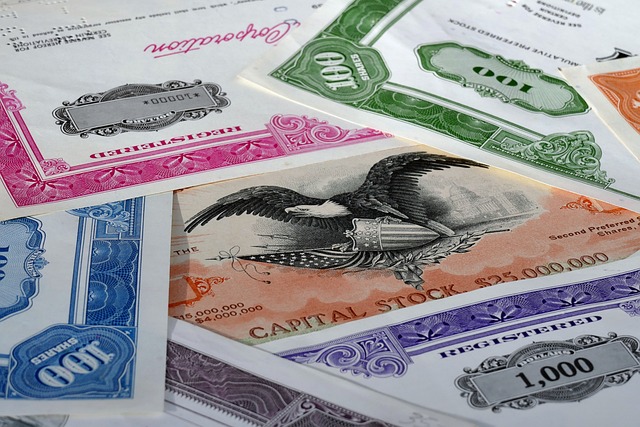Dividend ETFs and individual dividend stocks both provide opportunities for passive income, yet they function in distinct ways. While individual dividend stocks rely on the performance of a single company, dividend ETFs diversify across multiple firms. This difference makes dividend ETFs less risky and more convenient for investors seeking steady income without extensive research. Visit immediateprofit.app/connects you with experts who simplify the complexities of investment strategies.

Post Contents
How Dividend ETFs Differ from Individual Dividend Stocks?
Dividend ETFs and individual dividend stocks both offer a path to passive income, but they work in distinct ways. When you invest in an individual dividend stock, you’re putting your money into a single company. If that company performs well, your dividends will likely grow. But, if it underperforms or cuts its dividend, your income takes a hit. Essentially, you’re placing all your eggs in one basket, which can be risky.
Dividend ETFs, on the other hand, spread your investment across a basket of companies. Think of it like this: Instead of betting on one horse in a race, you’re backing the whole team. By holding shares in multiple dividend-paying companies, you reduce the chance of one company’s poor performance affecting your overall returns. Even if one company falters, others in the fund may continue to thrive, balancing the outcome.
Investing in a Dividend ETF is also less time-consuming. With individual stocks, you’d need to do thorough research to ensure the companies are solid and have a consistent dividend history. But with a Dividend ETF, a team of professionals does that for you. It’s kind of like ordering a pre-made meal instead of gathering all the ingredients yourself.
Have you ever found yourself wondering how to diversify without being overwhelmed by endless research? This is where Dividend ETFs shine. They allow you to enjoy the benefits of dividends with less risk and effort compared to picking individual stocks.
Breakdown of How Dividends Are Collected and Distributed Within ETFs
Understanding how Dividend ETFs collect and distribute dividends is simpler than you might think. Imagine you own a piece of several businesses, but instead of collecting checks from each one individually, the ETF does the heavy lifting for you.
When a company within the ETF’s portfolio pays a dividend, that money goes directly to the ETF itself. The ETF then pools the dividends from all the companies it holds. It doesn’t matter if a company is a tech giant or a humble utility firm; all the dividends are funneled into one central pot. This pooled money is typically collected on a quarterly basis, but it depends on how often the companies issue their dividends. Once collected, the ETF manager divides the total dividend amount among all the shareholders.
Now, the big question: How does this end up in your pocket? If you’re holding shares of the Dividend ETF, the fund will either send you the cash dividends or reinvest them, depending on your preference. Some investors like to take the cash for immediate use, while others prefer reinvesting to buy more shares and boost their long-term gains.
Think about it like this: Instead of juggling payments from multiple sources, you get one streamlined dividend payout from the ETF, making your life a whole lot easier. Plus, with this setup, you’re not constantly watching individual companies’ performance—you’re simply enjoying the steady flow of passive income.
Why Dividend ETFs Are Considered Low-Effort Income Generators
Dividend ETFs have earned a reputation as being a “set it and forget it” kind of investment. But why exactly are they so hands-off? For starters, they don’t require you to actively monitor individual companies or manage your portfolio. Instead of keeping an eye on a dozen stocks and worrying about whether each one will continue paying dividends, you can trust the ETF to spread your investment across many companies.
This is where the magic of diversification comes into play. Since Dividend ETFs invest in a wide range of dividend-paying companies, the risk of losing income from a single stock’s underperformance is minimized. Even if one company in the ETF stops paying dividends, the others will likely continue, so the impact on your overall income is relatively minor. It’s like having a safety net beneath your portfolio—if one thread breaks, the whole thing doesn’t unravel.
Additionally, many Dividend ETFs automatically reinvest dividends through a feature known as a Dividend Reinvestment Plan (DRIP). This means any dividends you earn are used to purchase more shares of the ETF, growing your investment over time without you lifting a finger.
From a time-management perspective, investing in a Dividend ETF requires very little effort. Once you’ve done your initial research and selected a suitable ETF, you don’t need to constantly tweak or rebalance your portfolio. Let’s face it, most of us would prefer to spend our free time with friends or pursuing hobbies, not glued to stock charts.
This combination of simplicity, steady income, and long-term growth potential is why Dividend ETFs are such a popular choice for people who want to generate passive income without the headache of active stock picking.
Conclusion
Choosing between dividend ETFs and individual dividend stocks depends on your investment style and risk tolerance. Dividend ETFs offer diversified, low-effort income generation, making them ideal for investors looking for stability without active management. On the other hand, individual dividend stocks may appeal to those willing to take on higher risk for potentially higher rewards.